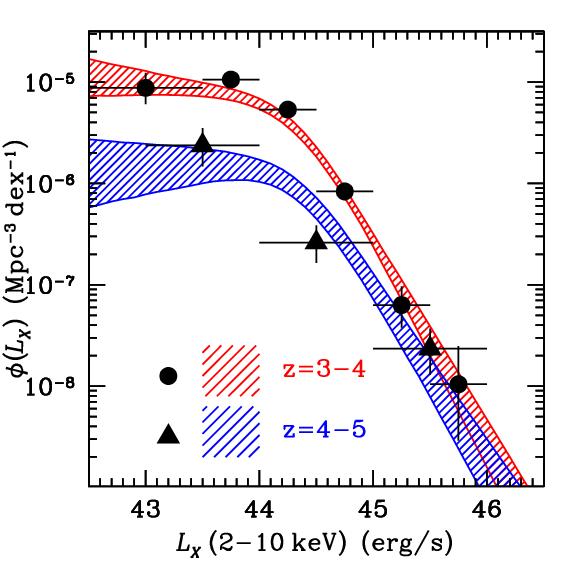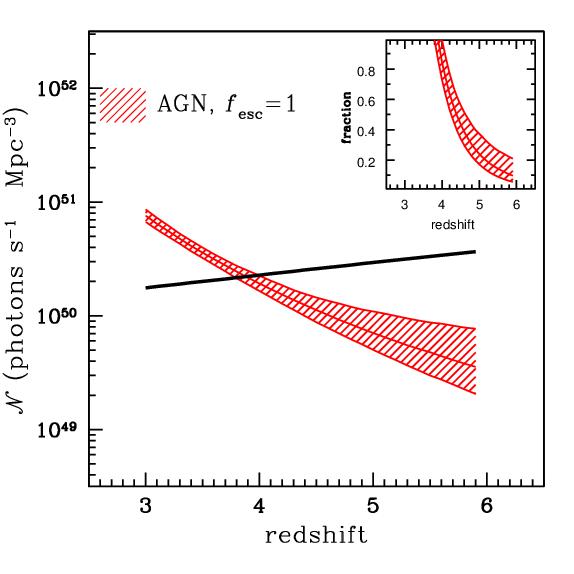|
The whereabouts of the first supermassive black holes
in the early Universe, with masses in excess of 107 in solar
units, is an open question in current astrophysical
research. The formation process of such monsters when the
Universe was still young is still under debate. Moreover, the
interplay between the growth of the first black holes and the formation of
proto-galaxies is still not well understood. The formation of the
first black holes also has cosmological implications. During their
growth phase such black holes are believed to emit hard UV photon
radiation, which may contribute of even dominate the
UV photon field needed to reionise the Universe at early epochs.
The first step for addressing the issues above is to constrain
the space density evolution of AGN at high redshift, z>3, i.e.
when the Universe was younger than 2Gyr. Selection of AGN at X-ray
wavelengths is advantageous for such studies, because X-ray
photons are less sensitive to obscuration effects, compared for
example, to UV/optical selection methods. Challenges for X-ray
selection methods are (i) the compilation of
large samples of high redshift AGN that span a wide-range of
accretion luminosities and (ii) the determination of reliable redshifts
for individual sources, particularly since a sizable fraction of
X-ray sources in current X-ray surveys are too faint for follow-up
spectroscopy.
Work is currently in progress to provide robust constraints on the
AGN space density as a function of redshift and accretion luminosity
at high redshift by (i) combining wide-area/shallow and pencil-beam/deep
X-ray surveys to have sufficiently
good coverage of the LX-z plane, (ii) using
multiwavelength photometric data to measure photometric redshifts
for X-ray sources that are too faint for follow-up spectroscopy and
(iii) developing a Bayesian approach to propagate uncertainties, in
e.g. photometric redshift measurements or accretion luminosity
estimations, in the AGN space density calculations. Recent results
of this approach include the determination of z=3-5 X-ray luminosity function by
Georgakakis
et al. 2015.
| 
